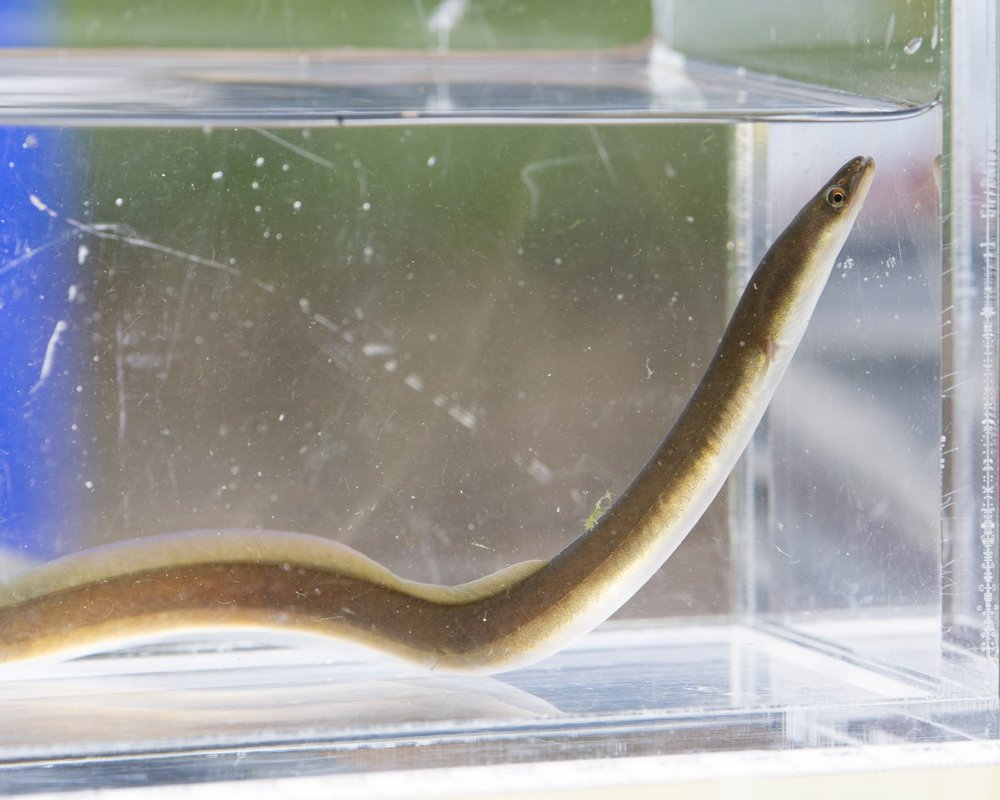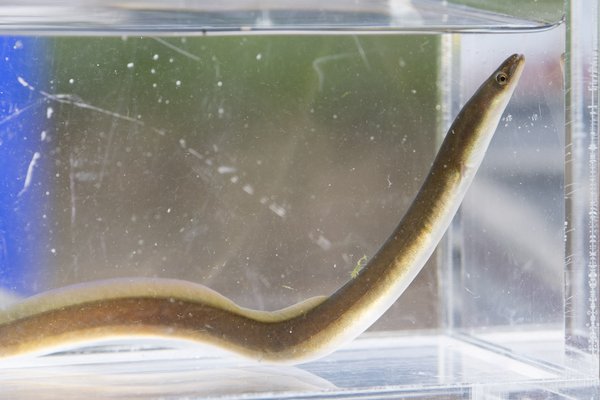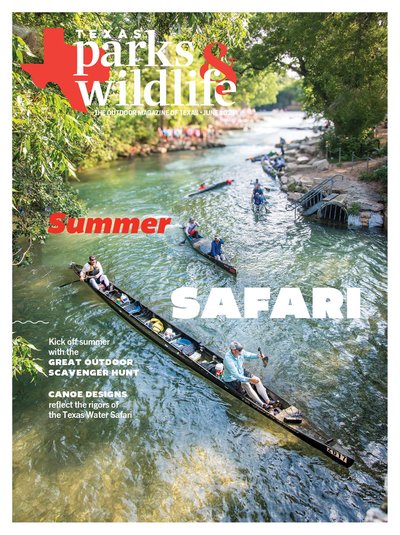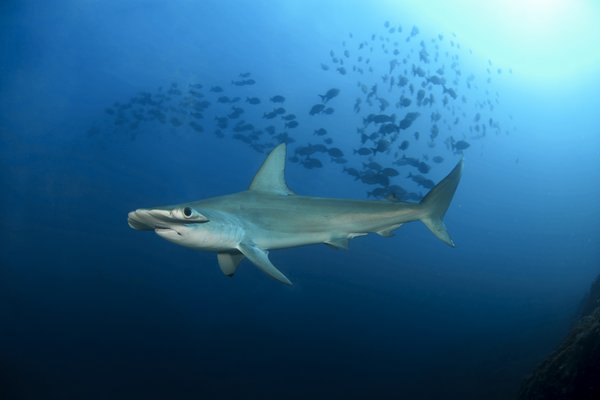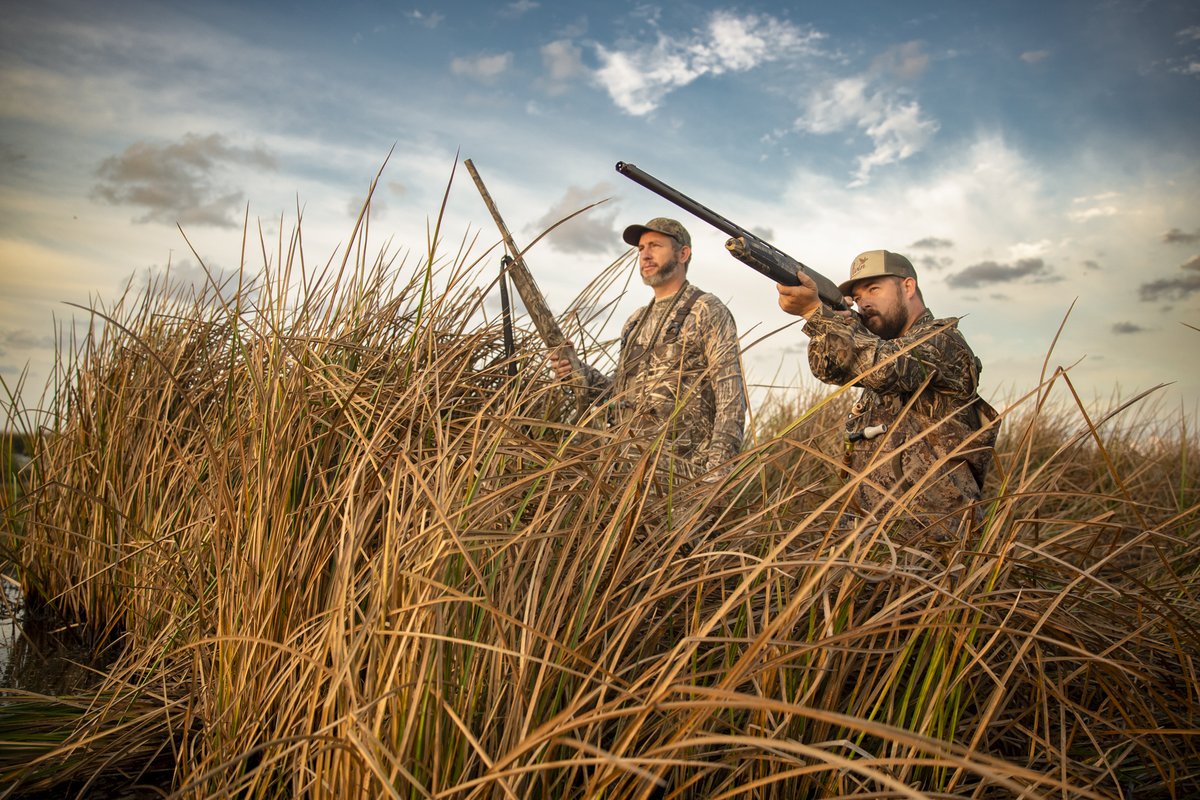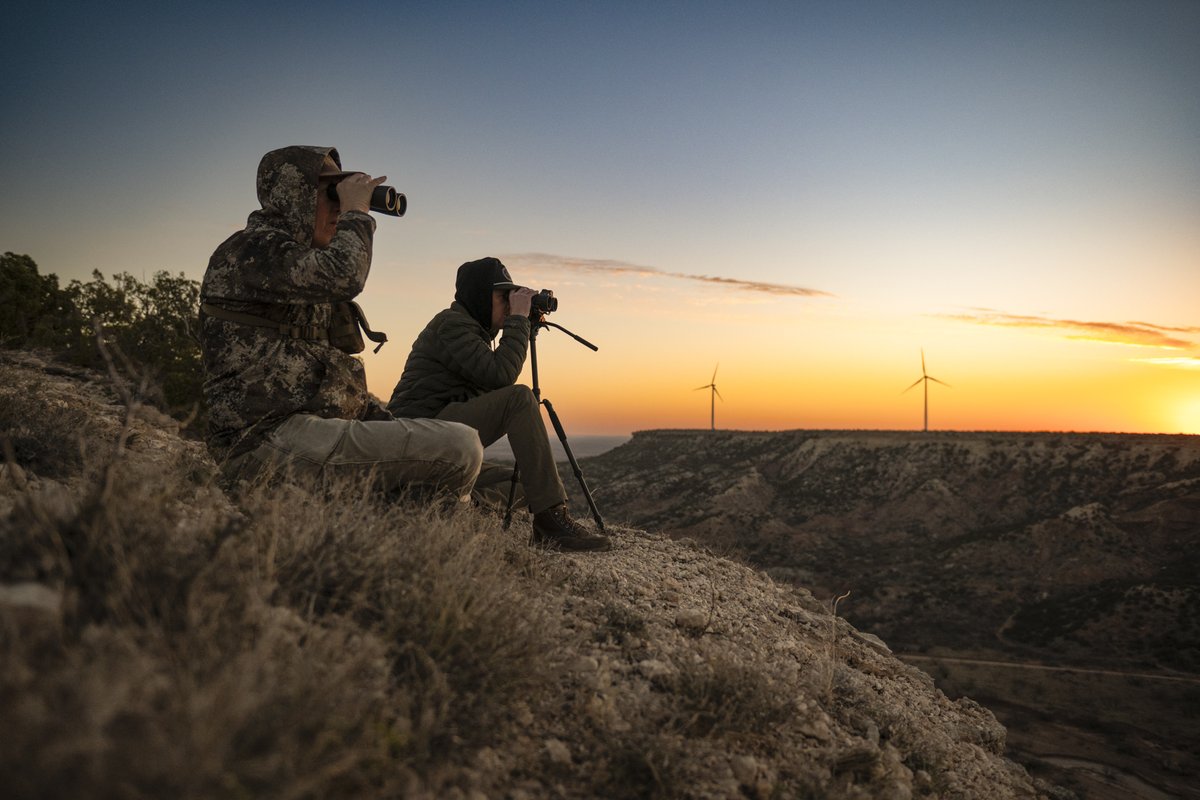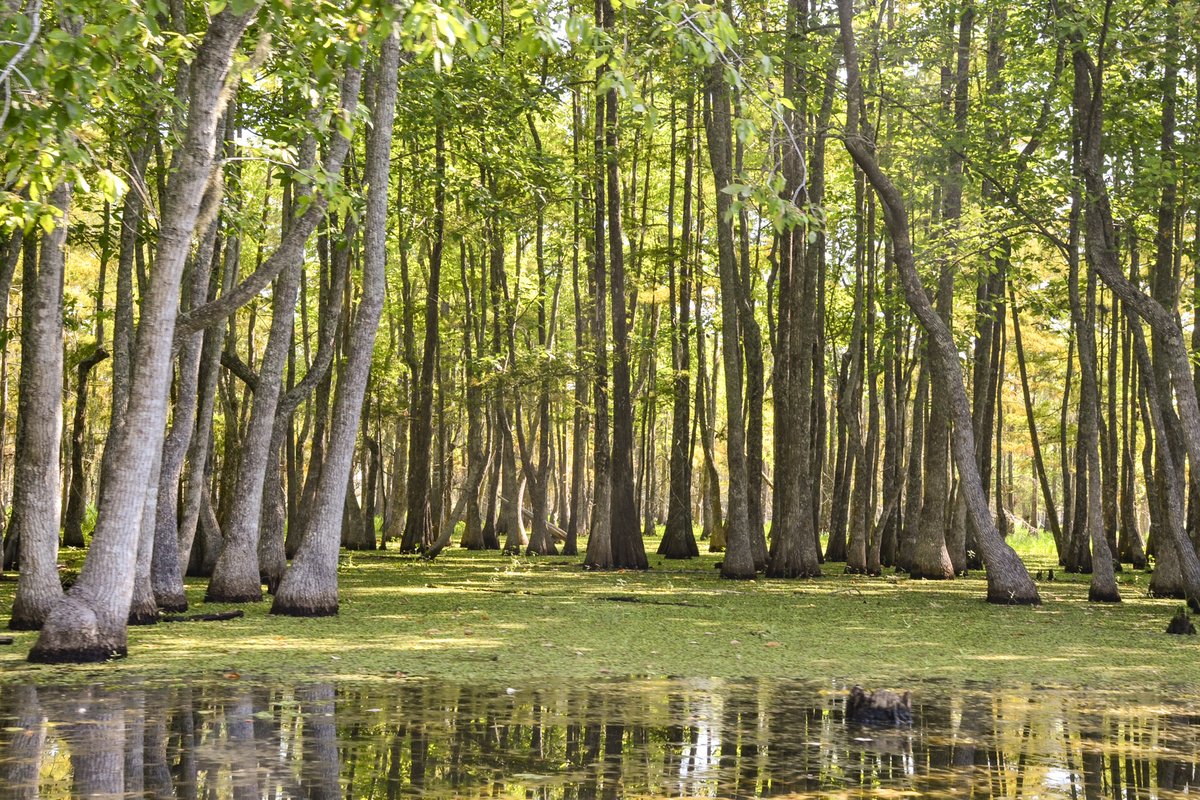On a Tuesday in early April, Texas Parks and Wildlife Department aquatic biologist Stephen Curtis is looking for eels in Lynn Bayou in Port Lavaca. Curtis has set out eel traps to collect the creatures as they migrate upstream. He peers into a bucket set alongside a freshwater inflow, and sees long, slippery fish wiggling inside. “Hey, we got eels!” he says.
The bucket contains a mixture of eels at different stages of development. Some are small and transparent, others longer and darkly pigmented. Curtis will transport the tiny eels he catches today to the A.E. Wood Fish Hatchery in San Marcos for further lab study. “We get their length, their weight, and try to figure out how far along they are [in their life cycle],” Curtis says.
This is the third year of a project by TPWD and partners to better understand the ecology of the American eel (Anguilla rostrata). Curtis and collaborators wanted to learn when these eels migrate into our Texas river systems, how successful the species is in the state, and how we can make management decisions that allow the eels to pass safely through our rivers and streams, helping them complete their life cycle.
Since the project has started, TPWD has gained valuable information on when the eels reach Texas waters, and what they do once they get here — but not without difficulty. “They're probably one of the most challenging species that we've ever worked with,” he says. “They always find a way to surprise you.”

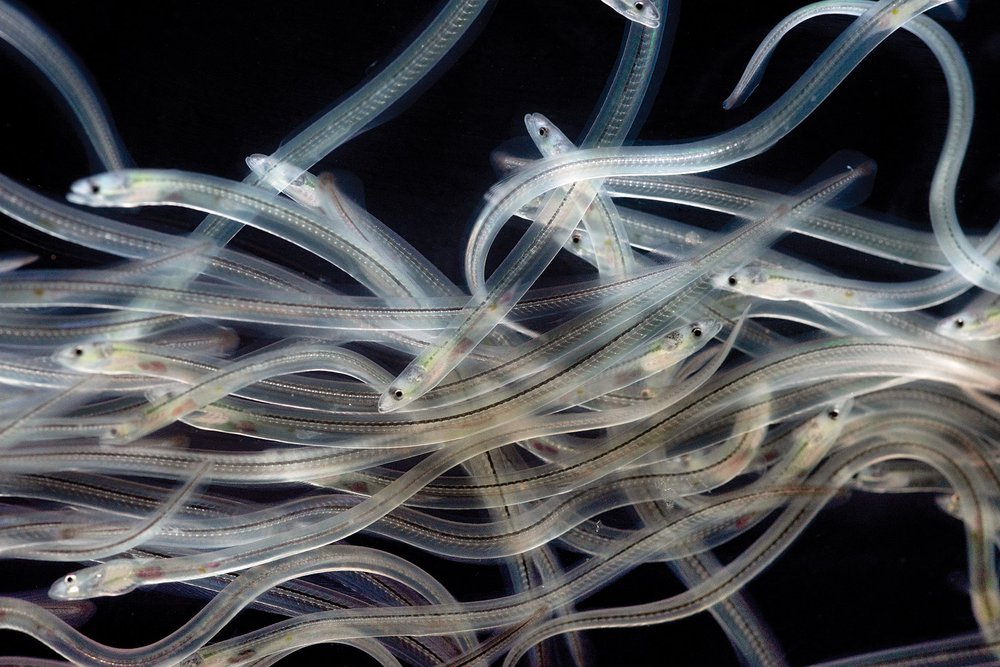
Glass eels, one of the life stages of American eels.
Glass eels, one of the life stages of American eels.
A Slippery Mystery
The American eel is a mysterious creature. Throughout their lives, they change in appearance so much that people used to think they were different species. And, no one has ever seen them spawn. The larvae seem to just appear in the Sargasso Sea, a patch of water in the North Atlantic named for its ever-present rafts of sargassum seaweed, but no adult eels have ever been seen there.
The larvae, called leptocephali, begin a long journey to the Atlantic coast of North America. About a year into this journey, they transform into their next life stage, called glass eels. “They're thin, they're transparent, they have very little pigmentation, and they're about 2 to 3 inches long,” says Curtis.
As they reach the fresh water of inland rivers and streams, the eels begin to gain pigment. They develop spots, and the skinny, narrow glass eels become darker and more tubular. At this stage, they're called elvers. They remain elvers for less than a year, steadily growing and gaining more pigment until they turn into the next stage: yellow eels.
“Those yellow eels are the classic stage that most people see,” says Curtis. “Whenever they're out fishing and they see an eel swimming in the water, it's likely going to be a yellow one. They can just go back and forth between salt and freshwater. That's pretty unique.”
As they make their way up rivers and streams, the eels show surprising strength and agility. There are records of them climbing near-vertical surfaces, navigating logjams and dams to continue their journey upstream for hundreds of miles. This journey can take many years, and some eels choose to migrate further than others.
Once they find their perfect spot, the eels will live there for 10-30 years before they reach the next phase of life: silver eels. This is perhaps their most dramatic change yet. Silver eels are long, lean, migrating and mating machines. Their skin thickens and turns a darker, blackish yellow, their eyes grow wider, and they shed their digestive tract and no longer eat. They dedicate all their remaining energy to the journey back downstream to the ocean, and then back to the Sargasso Sea to spawn.
Catching Clear Eels
These eels are widespread, their range stretching from Panama and Brazil all the way up the U.S. and Canada's Atlantic coast. “American” is a bit of a misnomer, as the eels also live in Greenland. Scientists have studied this species in many locations, but when it comes to the eels that live in Texas, there are still unknowns. When the TPWD project started in 2022, no one had ever even seen a glass eel in our state.
So TPWD and partners, including the University of Houston-Clear Lake and the Lower Colorado River Authority, installed various eel traps up and down the Gulf Coast, hoping to detect when the eels were entering our waterways.
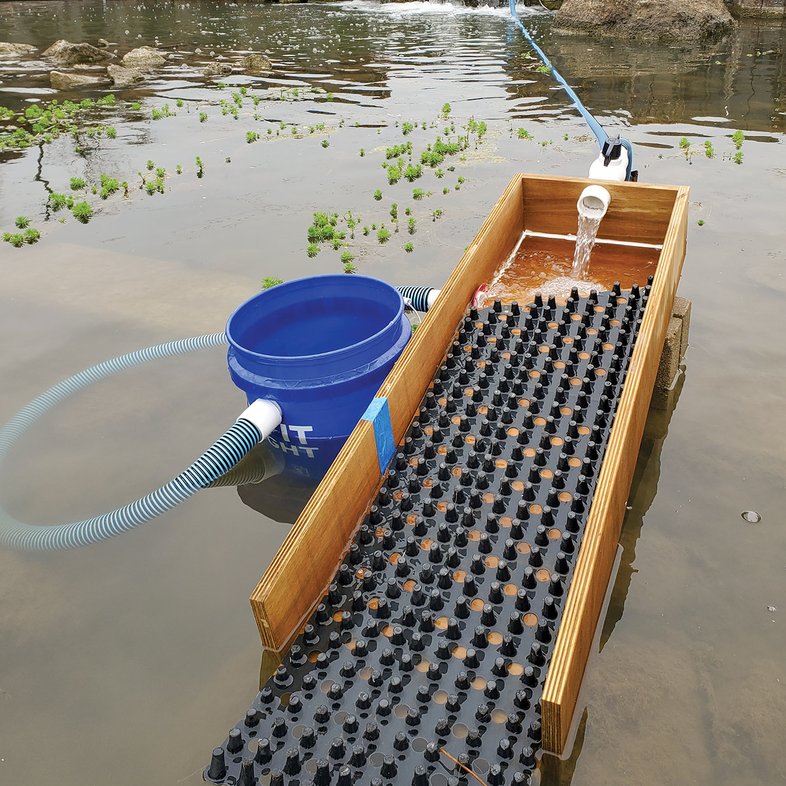

Eel ramps have proved successful in capturing eels in Texas.
Eel ramps have proved successful in capturing eels in Texas.
The trap design process took months, with researchers testing out different models and methods, including eel mops (frayed ropes attached to concrete where eels can hide) and eel ramps (small boxes with an inclined surface fed with flowing water leading to a collection bucket). The mops and ramps both worked well, and the researchers installed them at numerous locations along the coast and began checking them twice a week.
“We collected our very first glass eels in January of 2023, and to say that we were excited is an understatement,” says Curtis. “We were extremely thrilled to finally collect glass eels. Those are the first glass eels that have been documented in Texas.”
After that exciting milestone, Curtis and the team decided to extend the project by two years. Now entering their third year of sampling, the team has reduced the number of sites and narrowed down the best window for when glass eels arrive in Gulf Coast streams. The eels are most likely to arrive between December and April, but the catch volume and timing so far has varied from year to year, implying that the migration window may not be consistent.
Now that the researchers have determined a migration window, Curtis hopes they will be able to implement a consistent yearly monitoring program going forward, which several states on the Atlantic coast already have.
Knowing when and how the eels migrate in Texas will be fundamental in helping river authorities and other organizations who work on dam and development projects on Texas rivers manage this species better. While eels are quite skilled at navigating obstacles, some instream barriers can impede their progress up the rivers and reduce access to historical habitats.
Safe passage for eels through these obstacles would greatly help the species survival rates. The eels are an important species in our river ecosystems, serving as food for fish, birds and aquatic mammals.
“One of my favorite parts about this whole project is — of course the eels are cool — but I really like that it's brought a lot of people together to begin to study a species that we need to learn more about, so that we can implement actions to conserve and manage this species here in Texas,” says Curtis.
